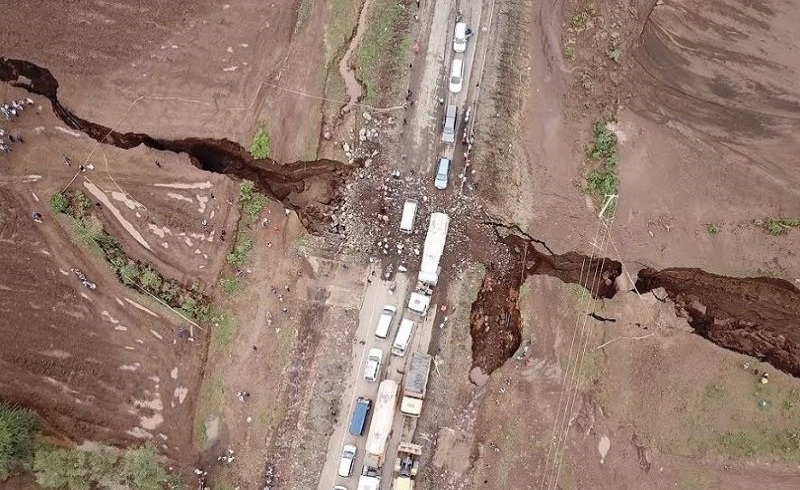Ethiopia, Kenya, and Djibouti to Literally Break off From Africa
We could have come up with something witty about cracks, but it’s the weekend.

In what looks like a sign of impending doom (except not really), Kenya’s Narok County witnessed the emergence of a kilometre-sized schism in the often-busy Mai Mahiu-Narok intersection, heralding the beginning of Africa’s split into two separate landmasses. Though its occurrence was as sudden as it was bewildering, nobody was hurt in the phenomenon, and it poses no risk to humanity at current, unless things take a Lovecraftian turn in the future.
Though it may seem like a cataclysmic, almost biblical occurrence, it’s not something science can’t take a crack at; the most likely explanation, according to most geologists worth their salt, is a superheated plume (a bunch of magma literally burning a hole in the earth’s crust) that has been building up for quite some time now. Potentiated by the kind of heavy rainfall the region is known for, the crack will continue to grow larger and deeper over the coming millions of years, setting up the groundwork for a small seaway to facilitate the formation of a separate island, partially including Ethiopia, Somalia, Kenya and Tanzania.
Phenomena like this aren’t exactly rare, seeing as it along with many other geological happenings have basically formed the layout of Earth’s landmasses and resulting continents as we know them today, and will continue to do so almost indefinitely (we’ll all be dead by then). The rifting currently taking place in Africa has been going on for nearly 25 million years now, and at a rate of only a few millimetres each year, Africa’s going to stay the same for a while.
Photo from Temblor.net.
- Previous Article Egyptian Artist Tackles Depression with his Paint Brush
- Next Article Meet the Egyptian Filmmaker Behind Our First Indie Feature in Cannes
























